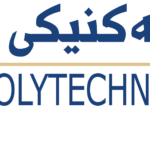- Omar Shirko Mustafa
- omar.mustafa@epu.edu.iq
- 0750 363 3901
- 1-FINA~2
-
Quantum Key Distribution (QKD) represents a groundbreaking application of quantum physics for secure symmetric encryption key distribution. This method exploits quantum mechanics unique attributes, such as the no-cloning theorem and Heisenberg uncertainty principle, to create inherently secure keys resistant to
eavesdropping. However, the primary challenge is the exponential reduction in key distribution rates as distances increase. To extend the secure communication range of QKD networks, a Classic Trusted Relay (CTR) scheme has been proposed, introducing trusted intermediate nodes for enhanced security over distance. Nevertheless, concerns regarding trust requirements in relay nodes and communication channel reliability pose significant risks, potentially leading to CTR failures and overall system security compromise.
This dissertation presents a novel approach addressing CTR failure
challenges and optimizing generated key utilization. The solution integrates Software-Defined Networking (SDN) with QKD, capitalizing on SDN's flexibility and control for improved network management. SDN, dividing the network into control and data planes, offers unified management and programmability. To enhance QKD network resilience and reliability, the Software-Defined Quantum Trusted Relay Failure (SDQTRF) model is proposed. This model employs a new SDN controller function to effectively orchestrate QKD network operations. By incorporating SDN capabilities, the SDQTRF model enhances fault tolerance and the system's ability to recover from relay failures. The SDN controller actively monitors the QKD network, including relay node status and key distribution processes. Upon detecting a relay failure, the SDN controller responds proactively by reconfiguring the network through key recycling using Q-learning. If recycling fails, the controller reroutes the key distribution process through alternative paths determined by the Q-learning method. This proactive approach minimizes relay failure impact, ensures continuous key distribution, and preserves system security. To assess the SDQTRF model's effectiveness, extensive simulations were conducted on two distinct network topologies: the National Science Foundation Network (NSFNET) and the United States network (USNET). Simulations utilized a high-performance NVIDIA GeForce RTX 3060Ti GPU and ran on the Windows 11 operating system, which provided stability. To simulate the proposed SDQTRF model, JavaScript, PhP, and Python programming languages using NetworkX library were employed due to their flexibility and extensive libraries for scientific computing and network simulations. Simulation results indicate significant improvements, including a substantial increase in the key generation ratio, remarkable key utilization rate enhancement, impressive recovery after failure rates, considerable reduction in the avalanche effect, and a lower service blocking rate due to SDQTRF model implementation. - Erbil Technical Engineering College
- Information System Engineering
- Quantum cryptography
- Deedar Arif Hussein
- deedar.hussein@epu.edu.iq
- 0750 416 9607
- DEEDAR ARIF HUSSEIN
-
In this research, the ultimate load capacity of post-installed anchors for three adhesives (three brands: HIT-RE10, ROX-GU80 and DUBELLF1331) and grouts (FLO-GROUT2) were evaluated experimentally and compared with the reference cast-in-place anchors. A parametric study was conducted to assess the effects of the anchor diameter (10, 12, 16 mm), anchor embedded length (5db,10db, and 15db), the cleaning method and drilled hole size on the adhesive and grouted anchors. Also, the effect of the saturation of the concrete on the pullout capacity for adhesive and grouted anchors had been studied.
Among the used three adhesive brands, the anchor adhesive Brand “HIT-RE10” appeared to have the largest bond capacity. Furthermore, apart from the small embedded length (5db), the experimental results showed that the ultimate load capacity of the post installed anchors was higher than the reference cast-in-place anchors. In the same embedded length range (>5db), the average bond stress decreased with the increase in the embedded length. With respect to the effect of increasing the embedment length and the diameter parameters, the results showed that there is a corresponding increase in the ultimate load capacity of both the adhesive and the grout anchors.
For the cleaning method parameter in the adhesive anchors, cleaning with Method I (air only) achieved a higher ultimate load capacity compared with cleaning using Method II (air plus wire brush) because wire brush tends to polish the drilled surface; however, in grouted anchors, cleaning using Method I (air plus wire brush) produced the larger capacity than cleaning using Method (II) because wire brush tend to remove dusts that remain in the drilled holes that produce a weaker bond between the grout and the concrete
The results showed also that cleaning holes of the adhesive anchors by Method III (washing with water and wire brush) produced the highest ultimate load capacity compared with the other two cleaning method.
Regarding the adhesive/grout thickness parameter, the ultimate load capacity, a part from the 5db embedment length, increasing adhesive thickness with (+4mm, +8mm and +12mm) resulted in a higher final bonding strength. This behavior was opposite in the grouted anchors, where there was a reduction in the ultimate load capacity with the increase of the grout thickness; this behavior was more pronounced at smaller depth (5db,10db) rather than large depth (15db).
Further, the adhesive anchors installed into wet saturated concrete have larger ultimate load capacity compared with the anchors installed into wet saturated concrete. Both of grouted and adhesive anchors ultimate load capacity increased when the anchors installed in saturated concrete but there was a drop in the ultimate load capacity of grouted anchor if it was installed into wet saturated concrete because it will increase the water / grout ratio. Also grouted anchors installed into dry concrete had lower ultimate load capacity compared to the grouted anchor that installed into saturated concrete.
- Erbil Technical Engineering College
- Civil engineering
- Structural engineering
- Narmin Jibrael Mansoor
- labs@epu.edu.iq
- 0750 456 6125
- Erbil Technical Administrative College
- Business administration
- Business administration
- GARDOON KHORSHID AZZAT
- gardoonkhurshid@epu.edu.iq
- 0750 455 3166
- Masters thesis
-
Abstract
Goal: The aim of the current study is to elucidate the historical evolution of information and
communication technology and establish the relationship between (information and
communication technology and enhancing the training efficiency of instructors) at Erbil
Polytechnic University.
General Framework: The general framework of the study addresses the research problem,
which has raised several questions about the nature of the relationship, impact, and variation
between the independent variable (information and communication technology) and the
dependent variable represented by (training efficiency). To achieve this, a hypothetical study
plan was designed, consisting of a set of main hypotheses. To validate these hypotheses, they
underwent multiple tests, using a survey questionnaire as a means of data collection.
Study Methodology: The study adopted a descriptive-analytical approach, where the main
and subsidiary variables were described. This methodology was also used to analyze the
relationships and effects among variables. Study Population: The current study includes all
instructors in the colleges and institutes affiliated with Erbil Polytechnic University. The
hypotheses were tested using statistical methods through the software (SPSS V.22).
Conclusions and Recommendations: The study arrived at several main conclusions,
including the presence of a positive linear relationship between information systems and
training efficiency at both the overall and partial levels. The results of pre-distribution
questionnaire tests indicated that they met the criteria of face validity, comprehensiveness,
and stability. This, along with the arbitration process, suggests the possibility of relying on the
data results obtained through the questionnaire. The study proposes leveraging the strong
relationship between the variables to benefit Erbil Polytechnic University and recommends
supporting and enhancing weaker relationships.
Keywords: Information and Communication Technology, Training Efficiency, Erbil
Polytechnic Universit. - Shaqlawa Technical College
- Management Information Systems
- Management



